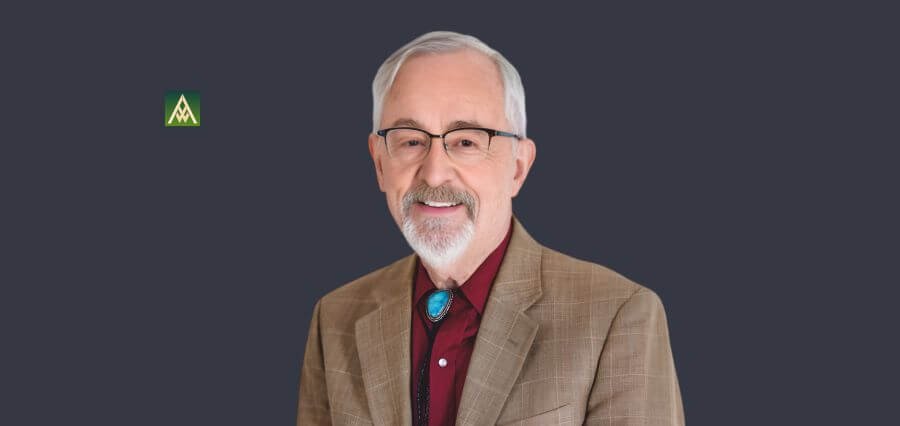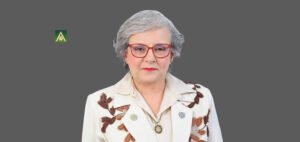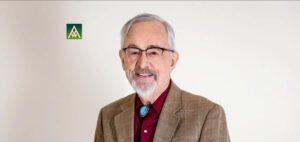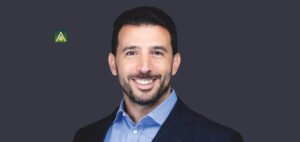In the world of analytical science and systems optimization, few individuals have left as profound a mark as Richard Larson. A pioneer in the domain of Operations Research (OR), Richard’s influence spans academia, industry, and public systems. With decades of experience, a rich academic lineage, and a relentless pursuit of innovation, Richard has not only advanced the theory of operations research but also made it an integral part of solving real-world challenges. His career stands as a model of excellence for future scholars and practitioners alike.
As a professor at the Massachusetts Institute of Technology (MIT), Richard’s passion for operational efficiency has influenced a generation of engineers, scientists, and policymakers. He exemplified a seamless blend of academic insight and field application, proving that effective solutions are born not only in the lab but also in the messy, unpredictable environment of real life. Through initiatives like ENFORTH Corporation and MIT BLOSSOMS, his contributions reflect a unique approach that blends technology, education, human psychology, and practical problem-solving.
Richard’s journey offers more than an academic narrative—it presents a philosophy of life, work, and contribution. From the hallways of MIT to the streets of urban America, he has shown how model thinking can change the world. His insights into queueing theory, public systems evaluation, and educational outreach have reshaped how we understand and implement solutions in fields as diverse as transportation, public health, energy, and education.
Mastering the Science of Operations
Richard stands as a distinguished figure in the field of operations research. This multifaceted discipline manages operational aspects of diverse systems—from air and ground transportation to inventory management, manufacturing, agriculture, and even HVAC systems. The core principle is efficiency—making complex activities run smoothly while enabling intelligent decision-making processes. Richard embodies this principle through decades of study, practical application, and teaching.
At the heart of operations research lies a robust foundation in mathematics and physics. Richard’s academic journey began in Needham, Massachusetts, where he was a focused high school student. His interest in physics led him to ace the Scholastic Assessment Test in the subject, ultimately securing a place at the prestigious Massachusetts Institute of Technology. There, his academic rigor evolved into a professional mastery of operational systems and models, turning theoretical knowledge into tools that enhance real-world functionality.
Richard demystified the complexity of operations research by connecting it to everyday scenarios. Whether it’s being delayed by a red light, running out of household supplies, or coping with flight cancellations, these seemingly mundane moments involve systems that can be optimized through OR. By making these connections, Richard helped broaden the appeal and accessibility of operations research, moving it beyond academic confines into the public sphere.
Applying Boots-on-the-Ground Insight
Throughout his career, Richard emphasized the critical importance of understanding real-world applications. He introduced the phrase “boots on the ground” to illustrate the necessity of experiencing challenges firsthand. This approach ensures models are not just theoretically sound but practically viable. For Richard, the value of any model is directly proportional to its real-world application and relevance.
To integrate academic insights into practical use, Richard co-founded a consulting firm with colleagues. Originally known as Public Systems Evaluation, Inc., it later transitioned into a for-profit venture called ENFORTH Corporation. At its height, ENFORTH employed over 30 full-time professionals and worked on numerous operational research projects rooted in public and private systems. These efforts bridged the gap between academic theory and applied science.
Through ENFORTH, Richard’s MIT-based research found practical pathways into real-world scenarios. This hybrid model of research and consultancy provided tangible solutions for urban planning, emergency response systems, and municipal services. More importantly, it set an example of how universities and industries can collaborate for mutual and societal benefit.
Pioneering Open-Source Education
Richard extended his vision to the realm of global education through MIT BLOSSOMS—Blended Learning Open Source Science or Math Studies. This initiative brought high-quality, interactive STEM content to classrooms worldwide. Created with a focus on accessibility, the platform now hosts 86 math and science lessons that are freely available on YouTube, enabling widespread learning across different educational systems.
The lessons—designed with an international audience in mind—aim to make abstract concepts engaging and understandable. Richard’s leadership in this space emphasized the importance of collaboration and innovation in educational delivery. Teachers, students, and researchers from around the world contributed to and benefitted from this effort, making it one of the earliest and most successful examples of open-source STEM learning.
By spearheading MIT BLOSSOMS, Richard not only educated students but also empowered teachers, especially in under-resourced regions. He believed that knowledge should not be limited by geography or economic barriers, and his platform continues to be a beacon of accessible education. His efforts proved that operational thinking and academic excellence could be democratized.
Academic Leadership at MIT ORC
Serving as co-director of the MIT Operations Research Center, Richard played a significant role in shaping the next generation of scholars and practitioners. Under his leadership, the center grew into a globally recognized hub for innovation and applied research. Together with colleagues from the MIT Sloan School of Management, he established a collaborative environment where interdisciplinary thinking flourished.
MIT ORC became a model of excellence, producing research that addressed critical challenges across sectors such as healthcare, logistics, disaster response, and urban planning. Richard’s mentorship contributed significantly to the academic development of his students, over 30 of whom completed their doctoral research under his supervision. Many have gone on to become professors, industry leaders, and change-makers in their own right.
Richard often reminded his students that impactful research requires both conceptual strength and practical intuition. He urged them to spend time on-site, observe operations, talk to stakeholders, and immerse themselves in the environment they aimed to model. This approach has become a hallmark of ORC’s training and research philosophy, deeply influenced by Richard’s boots-on-the-ground doctrine.
Bridging Theory and Reality
One of Richard’s most powerful lessons is that theory without context is ineffective. He believed that conceptual models needed to be tested and refined through continuous exposure to the real world. To drive this point home, he often quoted, “On Day 1, wear boots and be prepared to get them messy.” In his view, direct experience leads to insights that are impossible to derive from a desk.
A clear example is his teaching around Newton’s Laws of Motion. Instead of merely quoting equations, he encouraged his students to feel the force in action—press the gas pedal and observe acceleration. This hands-on pedagogy made scientific concepts relatable and memorable. According to him, all models are approximations, and while none are perfect, some are profoundly useful when developed with contextual understanding.
This principle informed much of his work in public systems. In projects involving emergency response, sanitation, and urban mobility, Richard’s models were crafted not in isolation but through site visits, interviews, and observation. This enabled the creation of tailored solutions that aligned closely with the actual needs of the community.
Innovations in Queueing and Psychology
A leading voice in queueing theory, Richard added a human-centric layer to mathematical models. While the field traditionally focused on minimizing wait times, Richard expanded the scope to include the psychology of waiting. He posited that perception matters more than the wait itself—if complaints are addressed, even a long queue becomes tolerable.
One of his classic examples involves mirrors in elevator lobbies. Mirrors distract people, reducing the perceived wait time. This simple design hack, backed by psychology and observation, exemplifies how user experience can be dramatically improved through thoughtful modeling. Richard’s insights have found applications in hospitals, airports, customer service centers, and more.
Beyond theory, his work stressed empathetic design. He urged systems engineers to think not just in terms of efficiency but also in terms of user satisfaction. This shift from pure mathematics to human-centered operations research marked a turning point in the field, making models more adaptable and impactful.
Lasting Achievements and Intellectual Legacy
Although Richard achieved numerous accolades throughout his career, he identifies mentoring students as his most significant accomplishment. The success of those he guided—many of whom have gone on to excel in academia, industry, and public service—is a testament to his impact. For Richard, the growth of his mentees symbolizes the multiplication of knowledge, purpose, and influence.
In terms of research contributions, his most notable include the invention of the Hypercube Queueing Model, the Queue Inference Engine, and his extensive work in optimal location theory, disaster management, and home energy systems. These innovations have become part of the standard toolkit for OR professionals globally.
Richard encapsulates his philosophy in his book Model Thinking for Everyday Life: How to Make Smarter Decisions, published by INFORMS. The book is a culmination of his life’s work—making complex ideas simple, actionable, and impactful. Now retired, Richard continues to influence the field through writing, speaking, and mentoring.
Inspiring Future Generations
Richard’s message to the new generation is simple but profound: follow your intellectual passions, immerse yourself in reality, and never underestimate the value of hard-earned experience. He encourages aspiring professionals to avoid the herd mentality and instead pursue what truly resonates with their interests and skills.
His personal life was marked by a deep commitment to family. Despite the demands of his professional journey, Richard maintained a balance, cherishing time with his late wife Mary Elizabeth Murray and their three children. His ability to compartmentalize, turning off the research switch at home, is part of what made him both a successful professional and a devoted family man.
As a retired professor, Richard remains a beacon of excellence, reminding us that the best research is both intellectually rigorous and deeply human. His legacy lies not just in his publications or models, but in the countless lives he has touched through teaching, mentorship, and open-source education.




